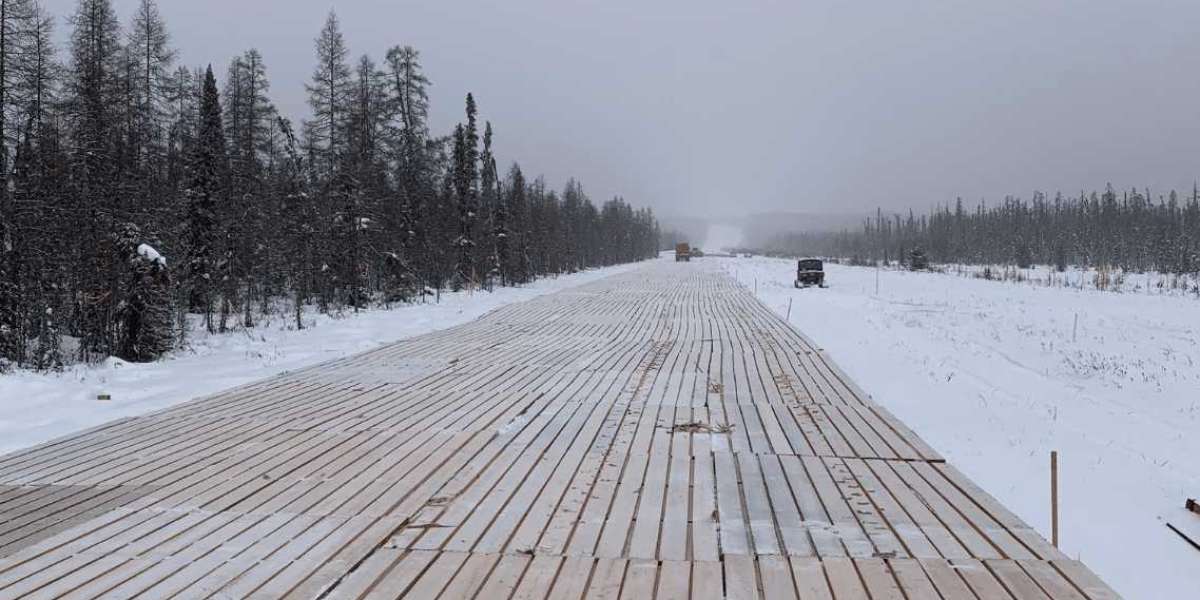What Are Heavy Duty Access Mats?
Heavy duty access mats are strong, durable platforms used to create temporary roads or stable working areas on soft or uneven ground. They’re often made from hardwood, composite materials, or laminated wood, depending on the project needs.
These mats are designed to handle the weight of heavy trucks, cranes, and other large machinery. They prevent vehicles from sinking into the ground and reduce damage to the environment underneath.
In simple terms, heavy duty access mats help you work where normal ground conditions won’t allow.
Why You Need Heavy Duty Access Mats
If you’ve ever tried to move equipment over mud or soft soil, you already know how tough it can be. Heavy equipment can easily get stuck, costing you time and money. That’s where access mats come in.
Here’s why they’re so important:
- Protect the ground: They prevent deep ruts and soil damage.
- Provide stability: Heavy machines stay level and safe during operation.
- Save time: You don’t have to wait for the ground to dry or stabilize.
- Reduce costs: Less need for repairs or site restoration after the job.
- Increase safety: Workers and equipment can move more safely and efficiently.
No matter the project size, using heavy duty access mats is a smart investment.
Different Types of Heavy Duty Access Mats
Not all mats are the same. The right type depends on your work environment and equipment. Let’s look at the most common types:
- Hardwood Mats:
- Made from oak or other hardwoods, these mats are strong and reliable. They’re perfect for short-term use and are often used in construction or utility work.
- Laminated Mats:
- These are built by bonding layers of wood together. They’re lightweight but still strong enough to handle medium to heavy loads.
- Composite Mats:
- Made from high-density plastic or other synthetic materials, composite mats are durable, weather-resistant, and reusable. They’re ideal for wet, muddy, or sensitive environments.
- Crane Mats:
- These mats are extra thick and built to handle extreme weight from cranes and other large machines.
Each type of heavy duty access mat serves a specific purpose, so it’s important to match the right one to your project.
How to Choose the Right Heavy Duty Access Mats
Choosing the right mats isn’t just about price. It’s about matching the mat to the job. Here’s what to consider:
1. Load Capacity
Think about the type of equipment you’ll be using. Heavier machinery like cranes or excavators will need mats with higher weight capacity. If the mat can’t handle the load, it might crack or shift, creating safety issues.
2. Ground Conditions
Soft, wet, or uneven terrain will need stronger, thicker mats. If you’re working on firm ground, lighter mats may be enough.
3. Material
Wood mats are affordable and easy to replace. Composite mats, while more expensive, last longer and can handle harsh conditions better.
4. Size and Thickness
Larger mats provide better stability but may be harder to move. Standard sizes work well for most jobs, but some projects may need custom options.
5. Duration of Use
If your project is long-term, composite mats can save money in the long run because they can be reused multiple times.
By taking these points into account, you can select the heavy duty access mats that offer the best mix of performance, durability, and value.
Benefits of Using Heavy Duty Access Mats
Using access mats isn’t just about protecting the ground—it’s about improving your entire work process.
- Durability: These mats can handle repeated use in tough environments.
- Safety: Workers and machinery stay steady even in muddy or uneven conditions.
- Eco-friendly: They minimize ground disturbance and protect vegetation.
- Cost-effective: You’ll spend less on repairs and site recovery later.
- Easy to install and remove: Most mats are designed for quick setup, reducing downtime.
Whether you’re building roads, laying pipelines, or setting up heavy equipment, heavy duty access mats are a must-have for smooth operations.
Maintenance Tips for Heavy Duty Access Mats
Keeping your mats in good shape helps them last longer and perform better. Here are some simple maintenance tips:
- Clean regularly: Remove mud and debris after use to prevent buildup.
- Inspect before and after use: Look for cracks, splits, or damage.
- Store properly: Keep them in a dry place to avoid rot or warping.
- Repair promptly: Fix minor issues before they turn into big problems.
- Rotate usage: Alternate mats during projects to even out wear.
Proper care extends the life of your heavy duty access mats, saving you money over time.
Environmental Benefits of Access Mats
Another great reason to use access mats is their positive impact on the environment. They help reduce soil erosion, protect vegetation, and minimize pollution from machinery.
By using reusable mats, companies can also cut down on waste. Composite mats, in particular, can be cleaned and reused hundreds of times, making them an eco-friendly choice for sustainable construction.
So, while you’re protecting your equipment, you’re also protecting the planet.
Common Mistakes to Avoid When Choosing Access Mats
It’s easy to make small mistakes when buying mats, but they can cost you later. Avoid these:
- Choosing the wrong mat size for your equipment.
- Using low-grade wood for heavy machinery.
- Ignoring ground conditions before installation.
- Skipping regular inspections and maintenance.
- Not securing the mats properly during use.
A little extra attention upfront ensures your heavy duty access mats perform as expected and keep your project running smoothly.
Where to Use Heavy Duty Access Mats
These mats can be used in many industries and settings:
- Construction Sites – Create temporary roads and stable work areas.
- Oil Gas Projects – Protect sensitive land while supporting heavy rigs.
- Utility Work – Provide safe access for powerline and pipeline maintenance.
- Forestry and Mining – Reduce ground impact and maintain access to remote areas.
- Events or Temporary Structures – Build stable flooring for large outdoor events.
Basically, anywhere you need a solid, temporary surface, heavy duty access mats are your best solution.
Conclusion
Choosing the right heavy duty access mats is about understanding your project needs and the conditions you’re working in. A good mat provides safety, durability, and protection for both your equipment and the environment.
Take the time to consider the weight of your machines, the type of terrain, and how long you’ll be using them. The right choice will save you time, reduce costs, and help your project run more smoothly.
If you’re looking for quality mats that last, always work with trusted suppliers who know the industry. The right foundation makes every project stronger.
5 FAQs About Heavy Duty Access Mats
1. What are heavy duty access mats used for?
They create stable, temporary roads and work surfaces for heavy equipment on soft or uneven ground.
2. What materials are best for access mats?
Composite and hardwood are most common. Composite mats are reusable and weather-resistant, while wood mats are affordable and easy to replace.
3. How long do heavy duty access mats last?
With good maintenance, composite mats can last for years. Wood mats usually last through several projects before needing replacement.
4. Can access mats be reused?
Yes, especially composite mats. They can be cleaned, stored, and used again on different job sites.
5. Are heavy duty access mats environmentally friendly?
Yes. They protect the ground, prevent erosion, and reduce long-term site damage, making them a sustainable option for many industries.








